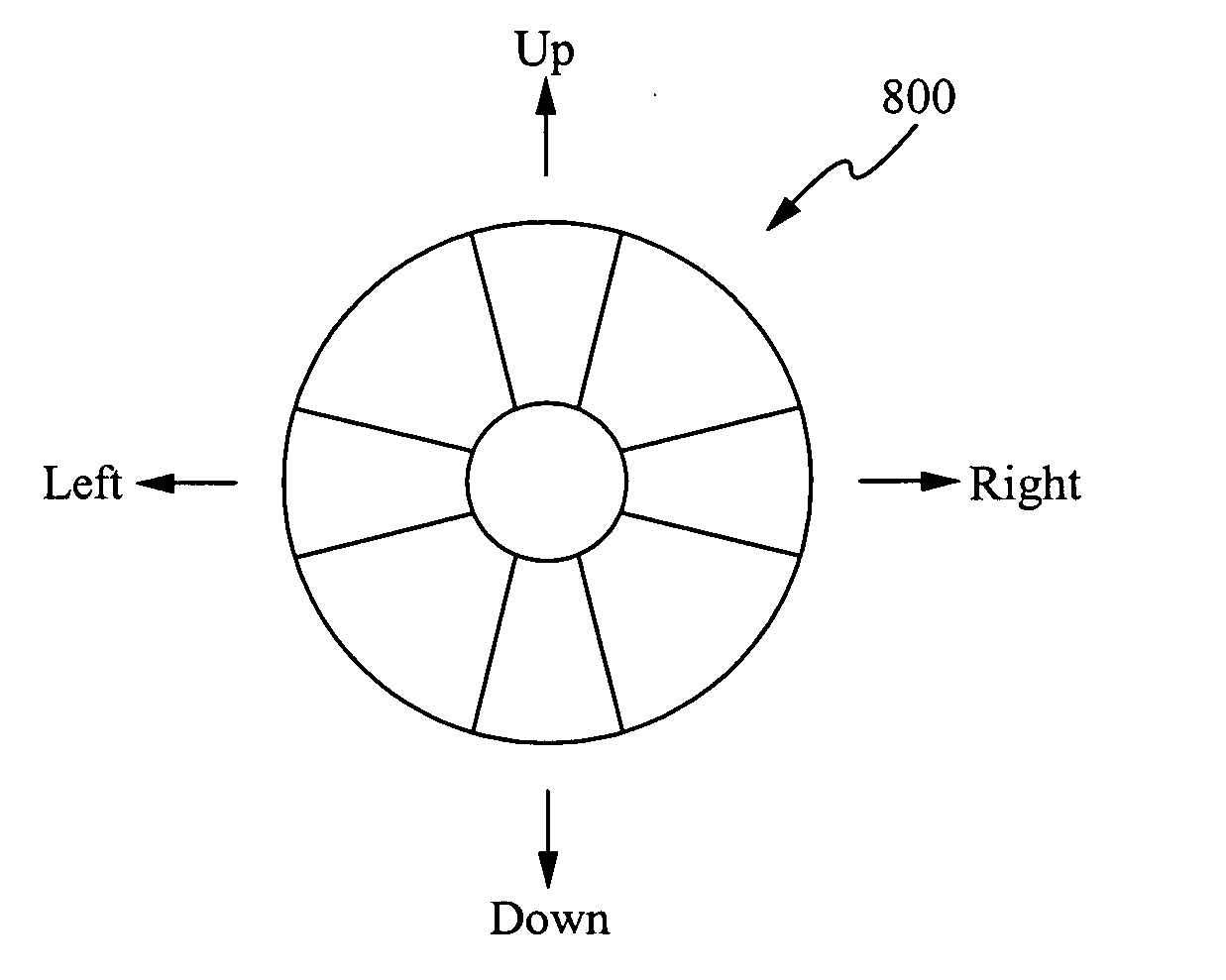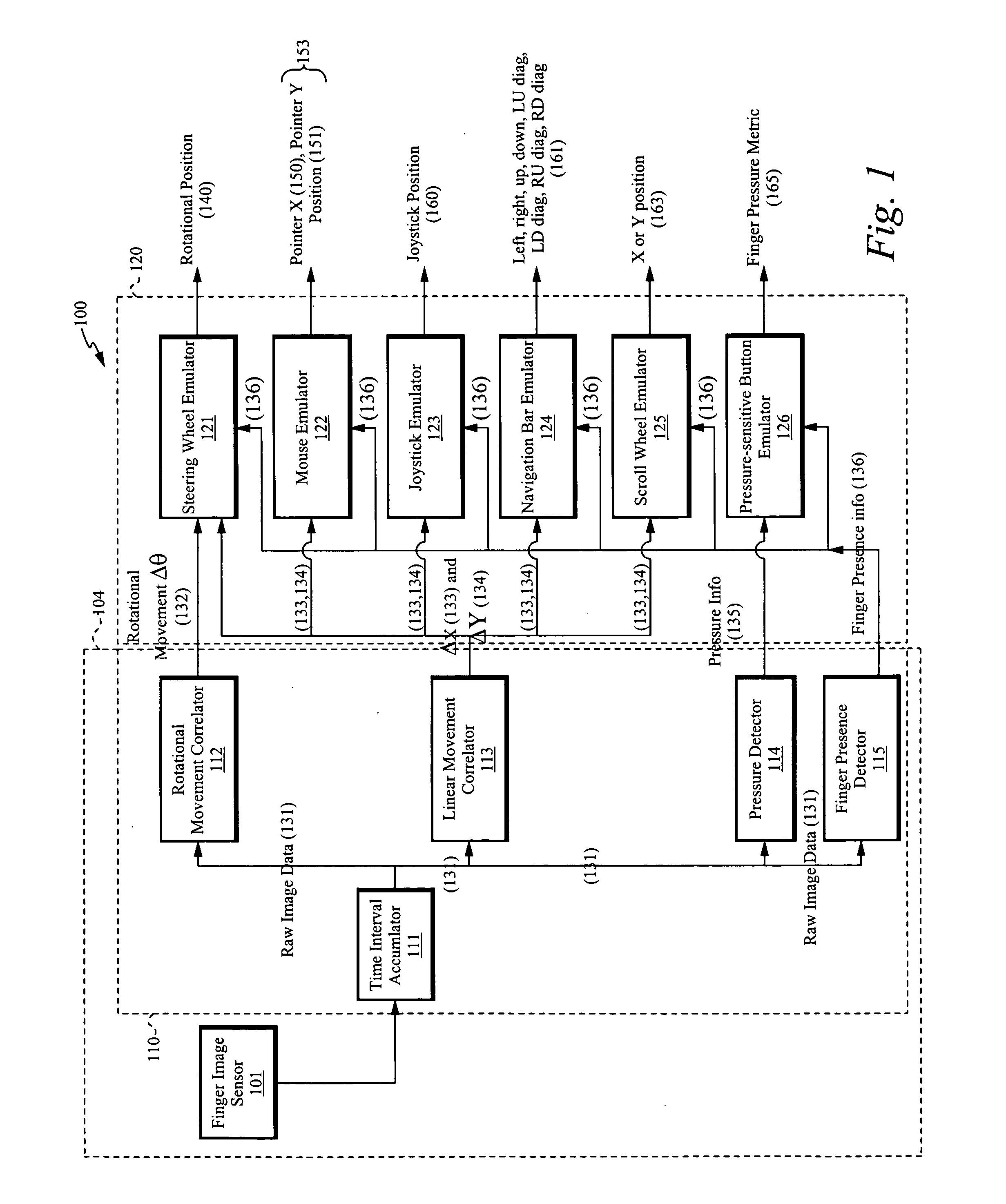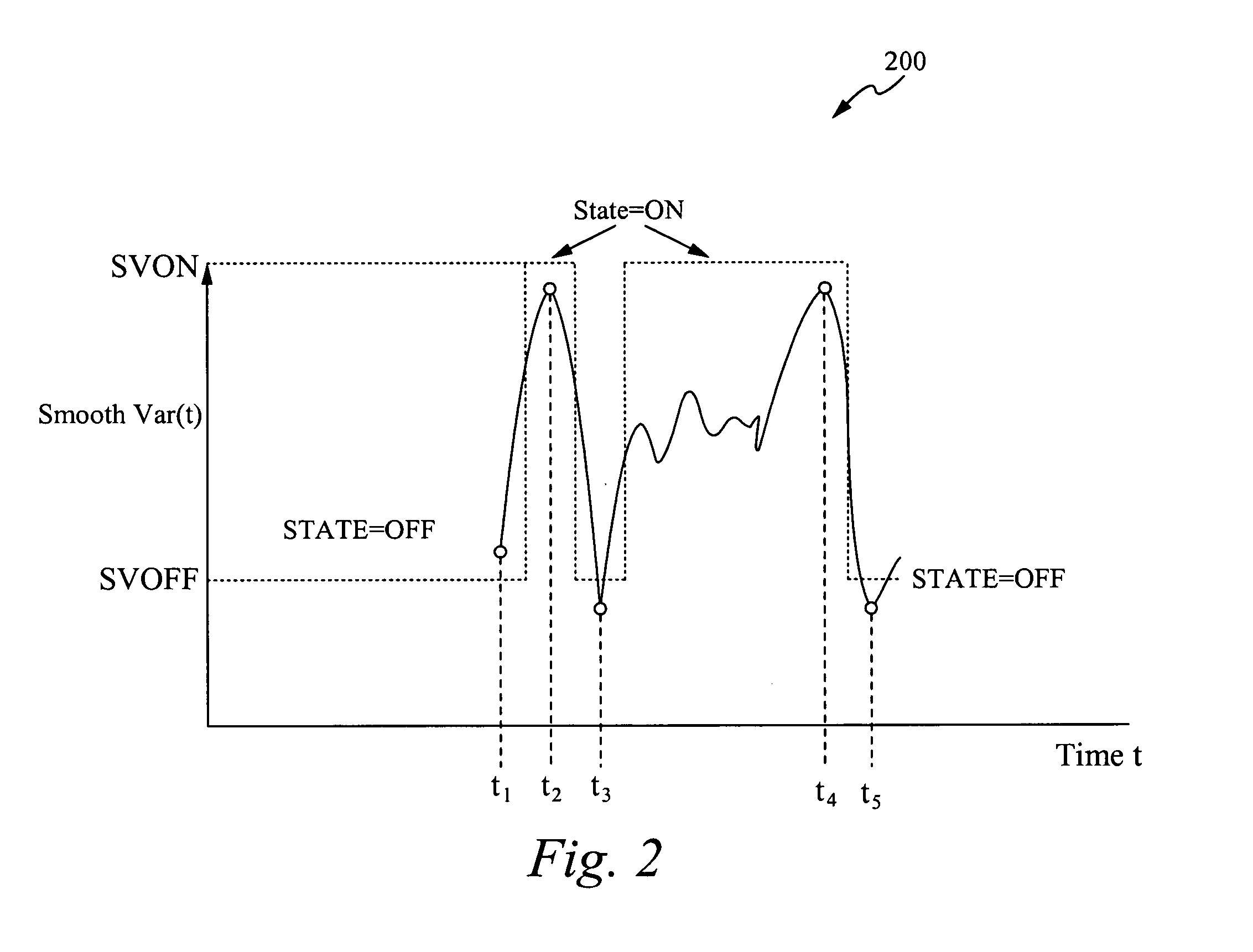System and method for a miniature user input device
a user input and device technology, applied in the field of biometric sensors, can solve the problems of consuming substantial surface real estate, limited success, and difficult to efficiently collect user input on these ever-smaller devices, and achieve the effect of less wear and tear and a small footprin
- Summary
- Abstract
- Description
- Claims
- Application Information
AI Technical Summary
Benefits of technology
Problems solved by technology
Method used
Image
Examples
Embodiment Construction
In accordance with the present invention, finger movement is tracked on a swipe finger image sensor to emulate more traditional devices including, but not limited to, mouse pointers, navigation bars, joysticks, scroll wheels, steering wheels, and pressure-sensitive buttons. The invention uses finger image sensors of any technology to capture finger image data, including but not limited to ridges, valleys, and minutiae, to generate user inputs for portable electronic computing platforms. By detecting the presence of a finger, its rotational and linear movements, its exerted pressure and time relationship among all these data, embodiments of the invention can emulate any number of navigation devices using a single physical finger image sensor, with no moving parts that can wear out.
Thus, in accordance with the invention, multiple input devices can be emulated without additional hardware; one or more input devices can function simultaneously; the method works on any sensor or sensor...
PUM
 Login to View More
Login to View More Abstract
Description
Claims
Application Information
 Login to View More
Login to View More - R&D
- Intellectual Property
- Life Sciences
- Materials
- Tech Scout
- Unparalleled Data Quality
- Higher Quality Content
- 60% Fewer Hallucinations
Browse by: Latest US Patents, China's latest patents, Technical Efficacy Thesaurus, Application Domain, Technology Topic, Popular Technical Reports.
© 2025 PatSnap. All rights reserved.Legal|Privacy policy|Modern Slavery Act Transparency Statement|Sitemap|About US| Contact US: help@patsnap.com



